Abstract
Investigations of homelessness have been hampered by the lack of operational definitions sensitive enough to achieve subgroup differentiation and simple enough to permit replication. As a consequence, programming and policy development have often proceeded based on varying assessments of the composition, size, and needs of the homeless population. This paper describes the empirical use of duration of homelessness and dwelling place as elements of an operational definition of homelessness. The approach reflects a conceptualization of homelessness as a continuous variable that can be described by coordinates of time and place. A screening instrument that quantified the homeless experience was developed and evaluated in conjunction with a federally funded demonstration project for homeless substance-abusing men and women. Eight hundred and thirty-nine men and women from six public detoxification centers were screened over a two-year period that began in August 1988. Respondents were asked eight questions to assess duration (time) and location (place) of homelessness before they entered the detoxification center. A simple index was constructed retrospectively and found to differentiate the sample into homeless and near-homeless subgroups. Between-group differences were statistically significant in demographics, presenting problems, and probability for successful intervention. These data paralleled previously reported differences between homeless subgroups and support the concurrent validity of the index. Cronbach's alpha (.72) showed the index to be moderately reliable. Differentiation of homeless persons into meaningful subgroups appears possible and programmatically recommended. Homelessness is not a unitary phenomenon, and it is unlikely to respond to therapeutic interventions that fail to consider individual differences.
Full text
PDF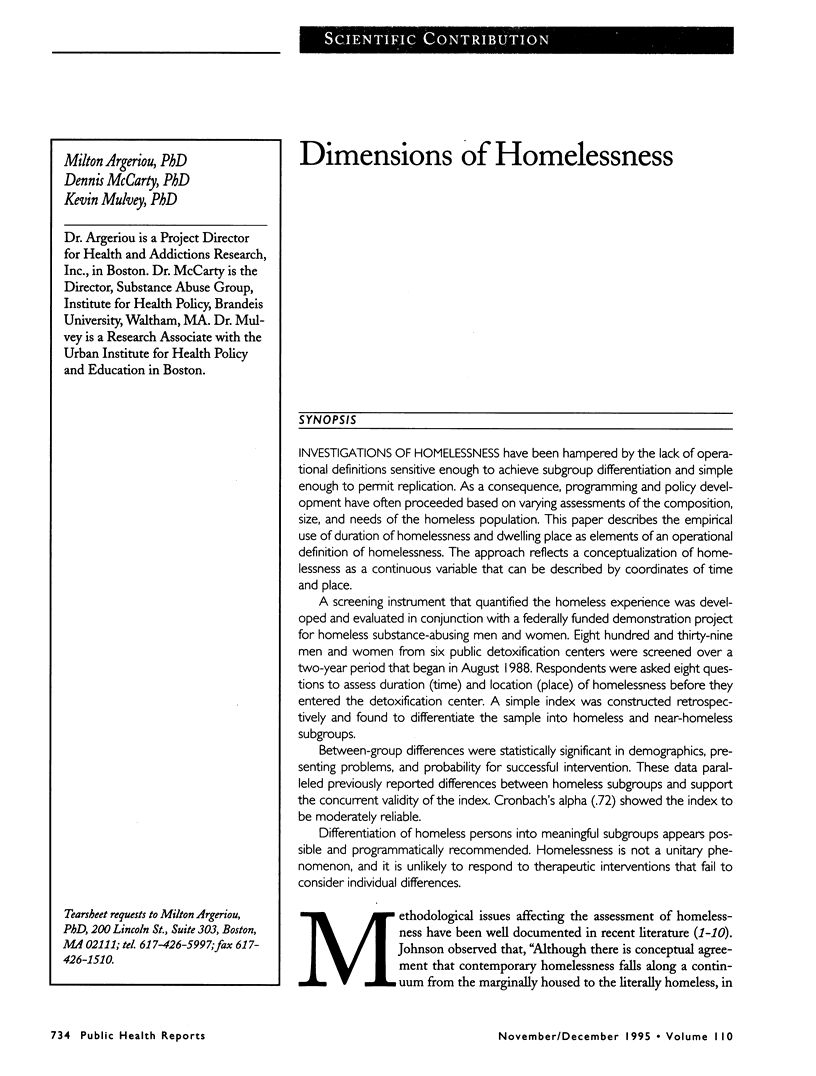
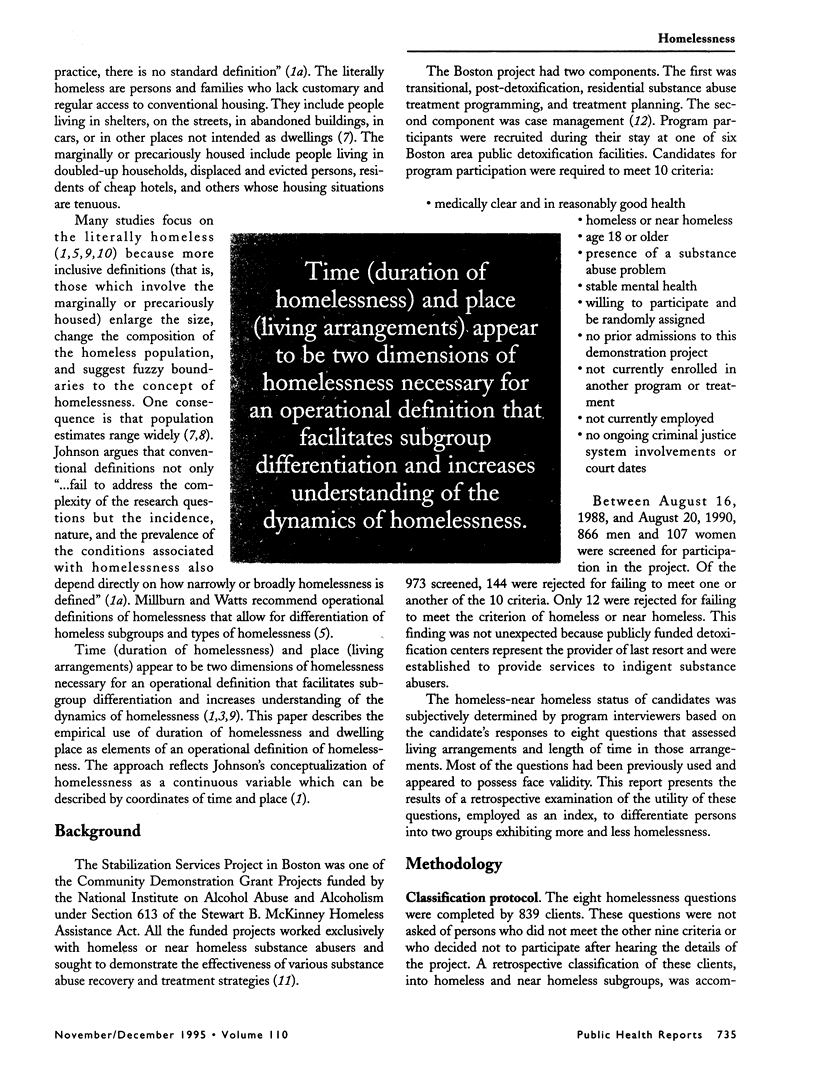
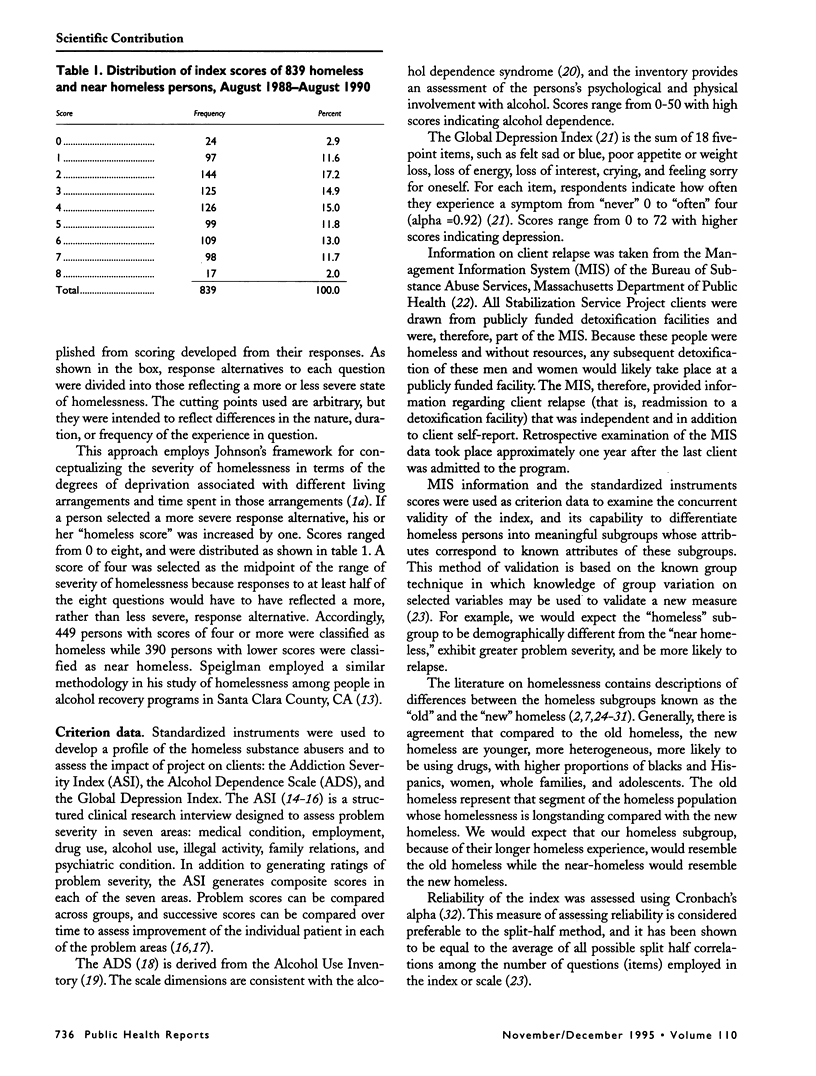
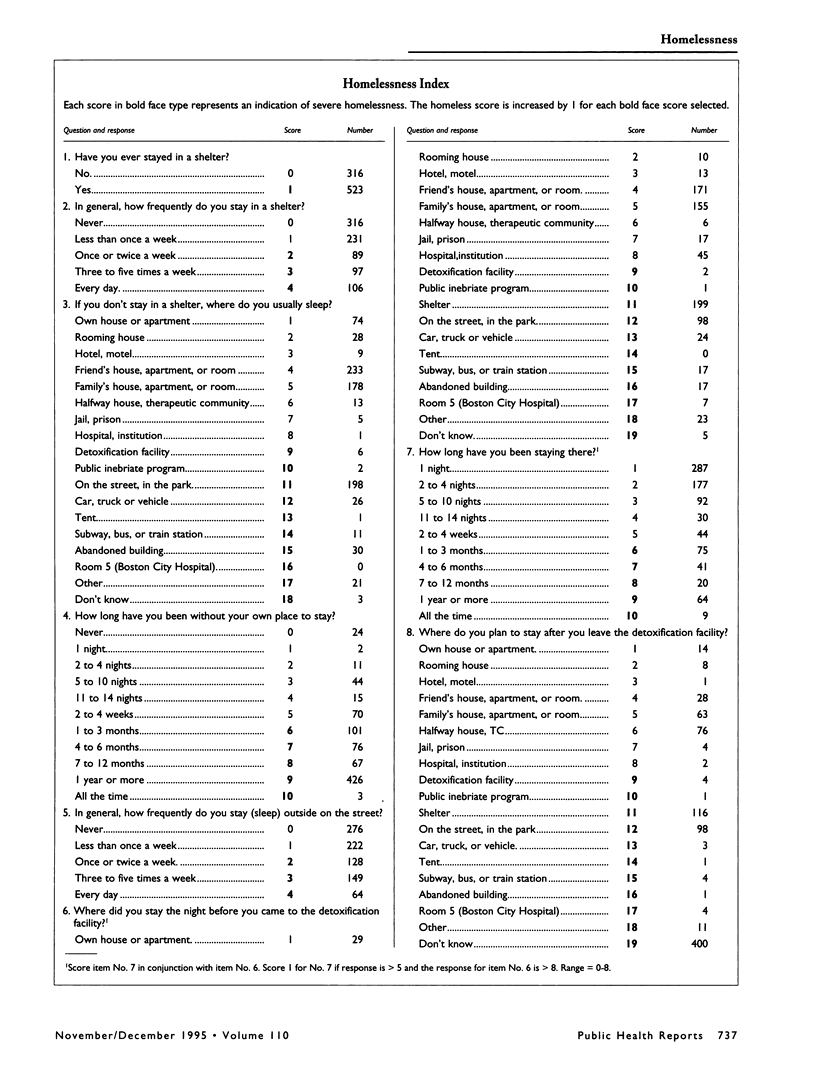
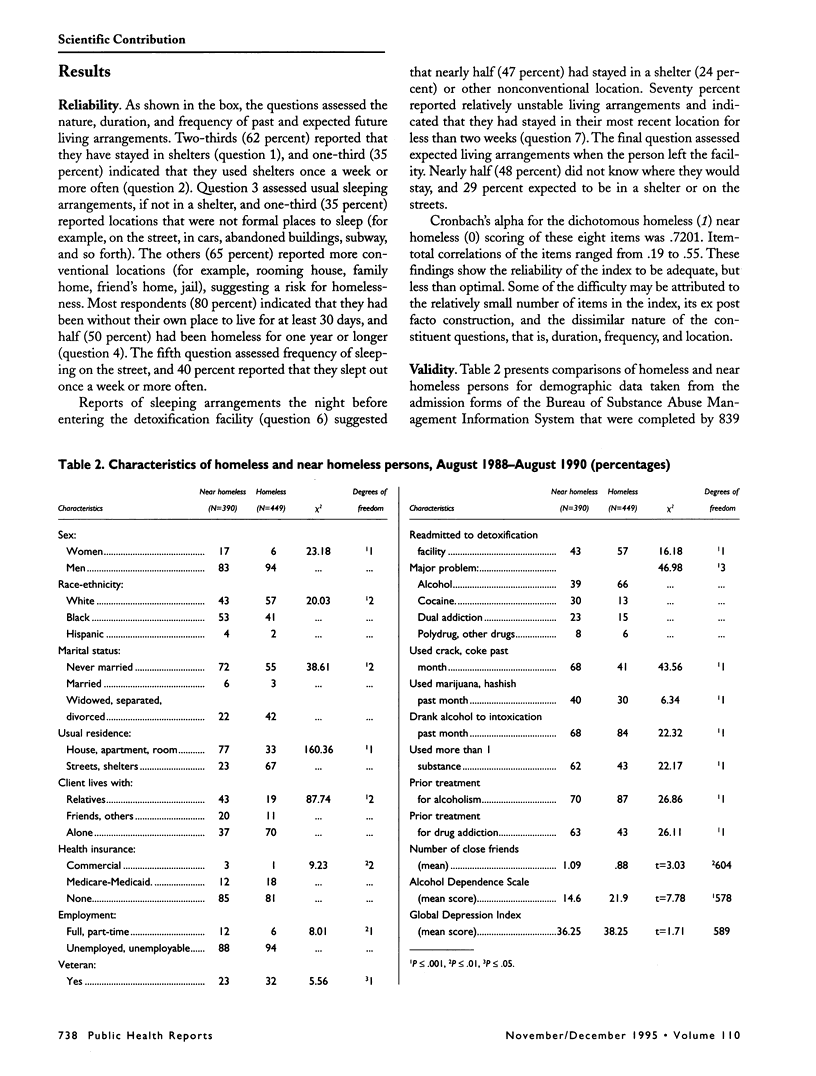
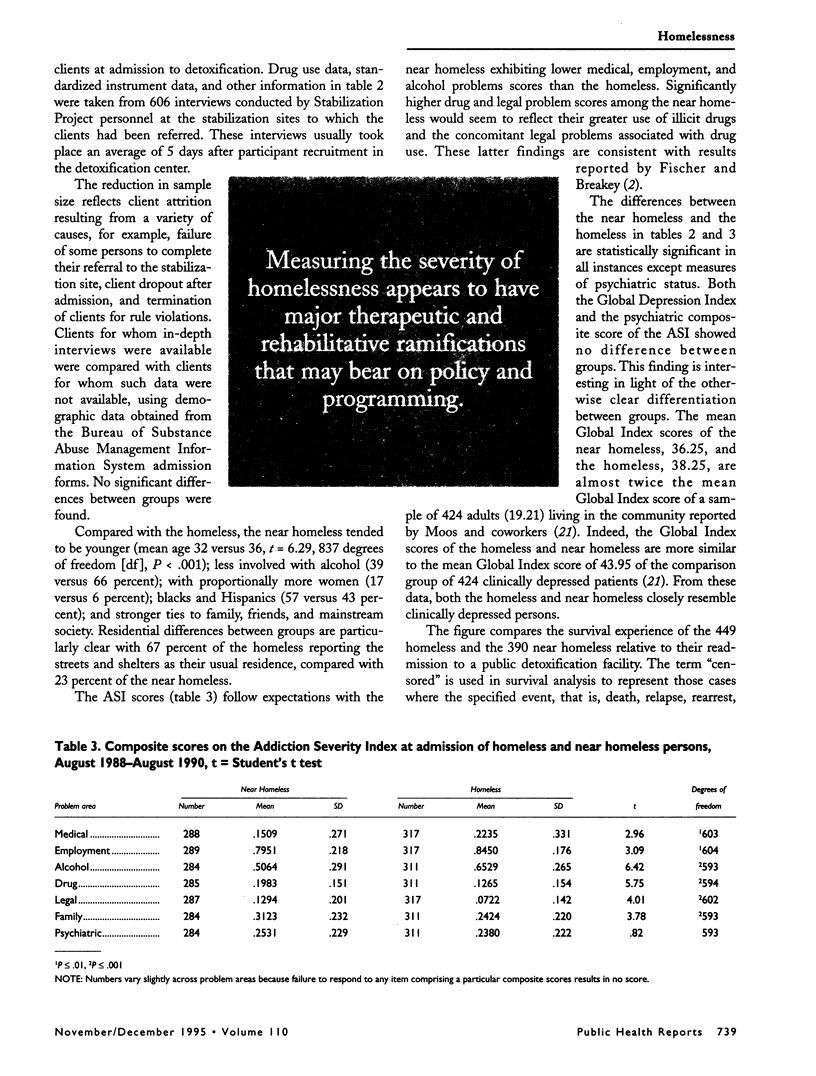
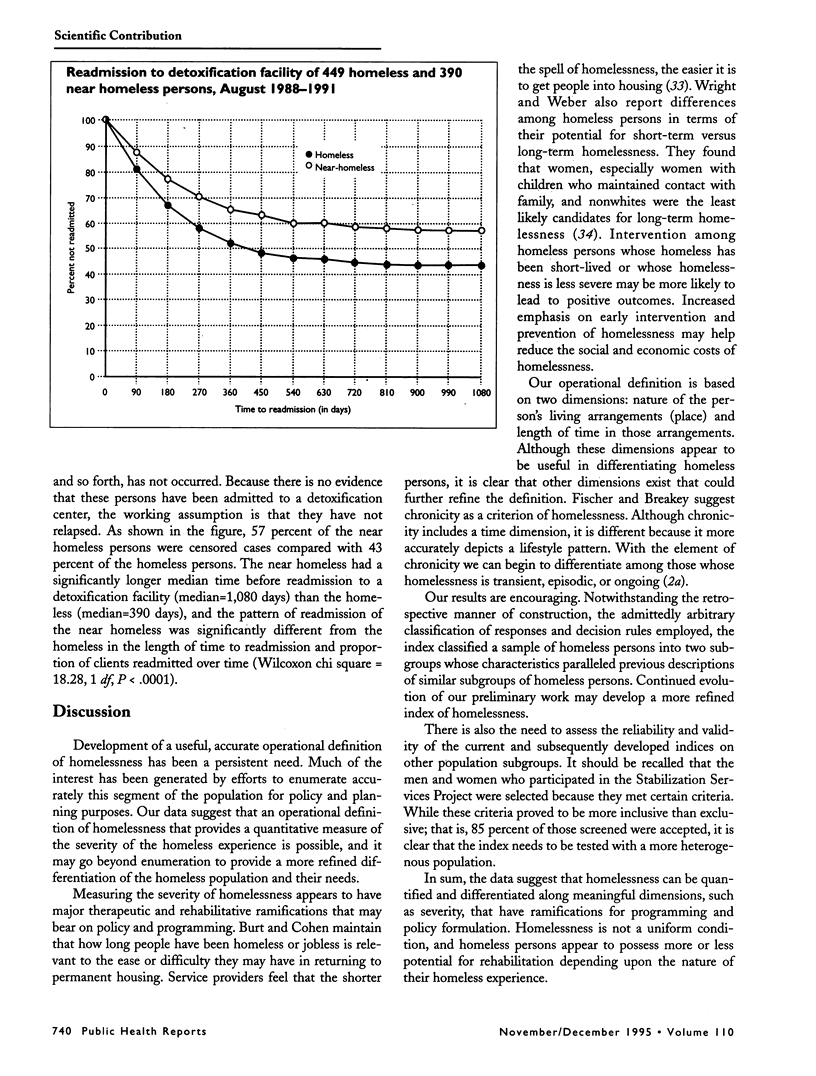

Selected References
These references are in PubMed. This may not be the complete list of references from this article.
- Argeriou M., McCarty D. The use of shelters as substance abuse stabilization sites. J Ment Health Adm. 1993 Summer;20(2):126–137. doi: 10.1007/BF02519237. [DOI] [PubMed] [Google Scholar]
- Camp J. M., Krakow M., McCarty D., Argeriou M. Substance abuse treatment management information systems: balancing federal, state, and service provider needs. J Ment Health Adm. 1992 Spring;19(1):5–20. doi: 10.1007/BF02521303. [DOI] [PubMed] [Google Scholar]
- Fischer P. J., Breakey W. R. The epidemiology of alcohol, drug, and mental disorders among homeless persons. Am Psychol. 1991 Nov;46(11):1115–1128. doi: 10.1037//0003-066x.46.11.1115. [DOI] [PubMed] [Google Scholar]
- Link B. G., Susser E., Stueve A., Phelan J., Moore R. E., Struening E. Lifetime and five-year prevalence of homelessness in the United States. Am J Public Health. 1994 Dec;84(12):1907–1912. doi: 10.2105/ajph.84.12.1907. [DOI] [PMC free article] [PubMed] [Google Scholar]
- McLellan A. T., Kushner H., Metzger D., Peters R., Smith I., Grissom G., Pettinati H., Argeriou M. The Fifth Edition of the Addiction Severity Index. J Subst Abuse Treat. 1992;9(3):199–213. doi: 10.1016/0740-5472(92)90062-s. [DOI] [PubMed] [Google Scholar]
- McLellan A. T., Luborsky L., Cacciola J., Griffith J., Evans F., Barr H. L., O'Brien C. P. New data from the Addiction Severity Index. Reliability and validity in three centers. J Nerv Ment Dis. 1985 Jul;173(7):412–423. doi: 10.1097/00005053-198507000-00005. [DOI] [PubMed] [Google Scholar]
- McLellan A. T., Luborsky L., Woody G. E., O'Brien C. P. An improved diagnostic evaluation instrument for substance abuse patients. The Addiction Severity Index. J Nerv Ment Dis. 1980 Jan;168(1):26–33. doi: 10.1097/00005053-198001000-00006. [DOI] [PubMed] [Google Scholar]
- Rossi P. H. The old homeless and the new homelessness in historical perspective. Am Psychol. 1990 Aug;45(8):954–959. doi: 10.1037//0003-066x.45.8.954. [DOI] [PubMed] [Google Scholar]
- Susser E., Conover S., Struening E. L. Problems of epidemiologic method in assessing the type and extent of mental illness among homeless adults. Hosp Community Psychiatry. 1989 Mar;40(3):261–265. doi: 10.1176/ps.40.3.261. [DOI] [PubMed] [Google Scholar]


